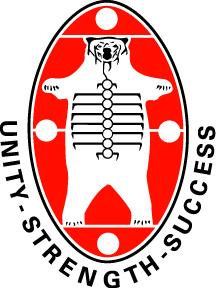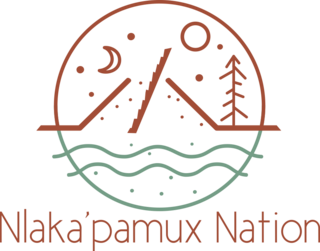The Cree are a North American Indigenous people. They live primarily in Canada, where they form one of that country's largest First Nations.

The Chipewyan are a Dene Indigenous Canadian people of the Athabaskan language family, whose ancestors are identified with the Taltheilei Shale archaeological tradition. Chipewyan is a Cree exonym (ᒌᐘᔮᐣ) meaning pointed hides, referring to the design of their parkas. They are part of the Northern Athabascan group of peoples, and come from what is now Western Canada.
The Dene people are an indigenous group of First Nations who inhabit the northern boreal and Arctic regions of Canada. The Dene speak Northern Athabaskan languages. Dene is the common Athabaskan word for "people". The term "Dene" has two usages. More commonly, it is used narrowly to refer to the Athabaskan speakers of the Northwest Territories and Nunavut in Canada, especially including the Chipewyan (Denesuline), Tlicho (Dogrib), Yellowknives (T'atsaot'ine), Slavey, and Sahtu. However, it is sometimes also used to refer to all Northern Athabaskan speakers, who are spread in a wide range all across Alaska and northern Canada. The Southern Athabaskan speakers do, however, refer to themselves with similar words: Diné (Navajo) and Indé (Apache).
Indigenous peoples in Quebec total 11 distinct ethnic groups. The 10 First Nations and the Inuit communities number 141,915 people and account for approximately 2 percent of the population of Quebec, Canada.
First Nations in Alberta are a group of people who live in the Canadian province of Alberta. The First Nations are peoples recognized as Indigenous peoples or Plains Indians in Canada excluding the Inuit and the Métis. According to the 2011 Census, a population of 116,670 Albertans self-identified as First Nations. Specifically there were 96,730 First Nations people with registered Indian Status and 19,945 First Nations people without registered Indian Status. Alberta has the third largest First Nations population among the provinces and territories. From this total population, 47.3% of the population lives on an Indian reserve and the other 52.7% live in urban centres. According to the 2011 Census, the First Nations population in Edmonton totalled at 31,780, which is the second highest for any city in Canada. The First Nations population in Calgary, in reference to the 2011 Census, totalled at 17,040. There are 48 First Nations or "bands" in Alberta, belonging to nine different ethnic groups or "tribes" based on their ancestral languages.
First Nations in Manitoba constitute of over 130,000 registered people, about 60% of whom live on reserve. There are 63 First Nations in the province and five indigenous linguistic groups. The languages are Nēhiyawēwin, Ojibwe, Dakota, Oji-Cree, and Dene.
Spuzzum First Nation is a Nlaka'pamux First Nations government located near Spuzzum, British Columbia. It is a member of the Fraser Canyon Indian Administration, one of three tribal councils of the Nlaka'pamux people. Other members of the Fraser Canyon Indian Administration are the Kanaka Bar, Skuppah and Nicomen First Nations.
The Nlaka'pamux Nation Tribal Council, formerly the Fraser Thompson Indian Services Society, is a First Nations government Tribal Council comprising bands in the Fraser Canyon and Thompson Canyon areas of the Canadian province of British Columbia. It is one of three tribal councils of the Nlaka'pamux people, the others being the Nicola Tribal Association and the Fraser Canyon Indian Administration. The Lytton First Nation, which is the government of the largest Nlaka'pamux community, does not belong to any of the three.

Nishnawbe Aski Nation is a political organization representing 49 First Nation communities across Treaty 9 and Treaty 5 areas of Northern Ontario, Canada. Re-organized to its present form in 1981, NAN's original objective was "to represent the social and economic aspirations of our people at all levels of government in Canada and Ontario until such time as real effective action is taken to remedy our problems."
The following is an alphabetical list of topics related to Indigenous peoples in Canada, comprising the First Nations, Inuit and Métis peoples.

The Atikamekw are the Indigenous inhabitants of the subnational country or territory they call Nitaskinan, in the upper Saint-Maurice River valley of Quebec, Canada. Their current population is around 8,000. One of the main communities is Manawan, about 160 kilometres (99 mi) northeast of Montreal. They have a tradition of agriculture as well as fishing, hunting and gathering. They have close traditional ties with the Innu people, who were their historical allies against the Inuit.

The Nlaka'pamux or Nlakapamuk, also previously known as the Thompson, Thompson River Salish, Thompson Salish, Thompson River Indians or Thompson River people, and historically as the Klackarpun, Haukamaugh, Knife Indians, and Couteau Indians, are an Indigenous First Nations people of the Interior Salish language group in southern British Columbia. Their traditional territory includes parts of the North Cascades region of Washington.
The Mathias Colomb Cree Nation (MCCN) —also known as Mathias Colomb First Nation, Mathias Colomb (Cree) First Nation, and Pukatawagan/Mathias Colomb Cree Nation—is a remote First Nations community in northern Manitoba, located 210 km (130 mi) north of The Pas and 819 km (509 mi) northwest of Winnipeg, Manitoba.
Keewatin Tribal Council is a tribal council representing 11 First Nation band governments in the province of Manitoba. Its head offices are located in Thompson, Manitoba, with a secondary office in Winnipeg.




